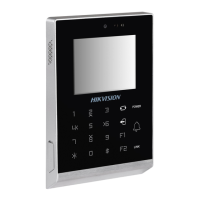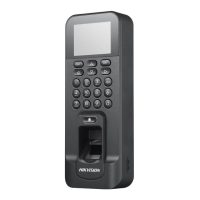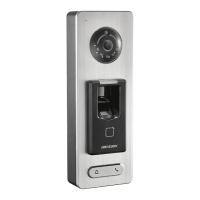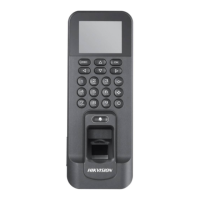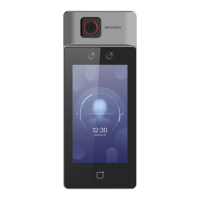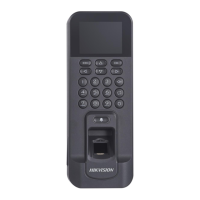Access Control Terminal·User Manual
28
Notes:
Tap the key to enter and exit the editing mode.
Tap the Right/Left direction keys to choose contents.
Tap the # key to switch the mode between “Yes” mode and “No” mode.
4. Move the cursor to the OK button, and tap the # key.
6.3.2 Managing Data
Purpose:
On the data management interface, you can delete the storage data of the device.
Steps:
1. Move the cursor to Data (data management) by using direction keys in the system settings Interface.
2. Tap the # key to enter the data management interface.
Figure 6-22 Data Management Interface
3. Move the cursor to Delete Card Parameters, Delete Event Only, or Delete Picture Only.
Delete Card Parameters: Delete all cards parameters registered in the device.
Delete Event Only: Delete all access events in the system.
Delete Picture Only: Delete all captured pictures in the system.
Note: This function is only supported by terminal with the model of –C.
4. Tap the # key.
6.3.3 Restoring Settings
Purpose:
On the restore settings interface, you can restore Factory Defaults or Default Settings.
Steps:
1. Move the cursor to Reset (restore settings) by using direction keys on the system settings interface.
2. Tap the # key to enter the restore settings interface.
Figure 6-23 Restore Settings Interface
3. Move the cursor to Factory Defaults or Default Settings.
Factory Defaults: After restoring factory defaults, all parameters of the device are returned to the factory defaults.
Default Settings: After restoring defaults settings, parameters, excluding network parameters and event parameters, are
returned to the factory defaults.
4. Tap the # key.
5. Move the cursor to the OK button, and tap the # key.
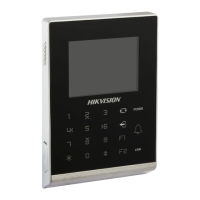
